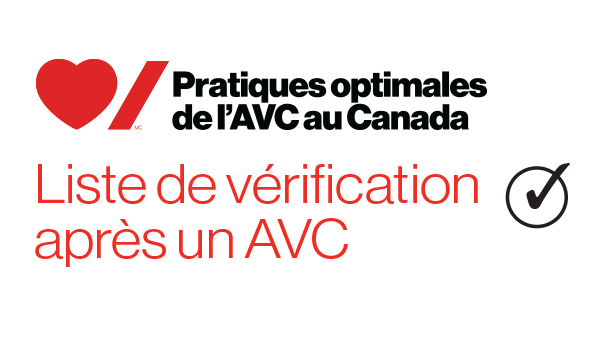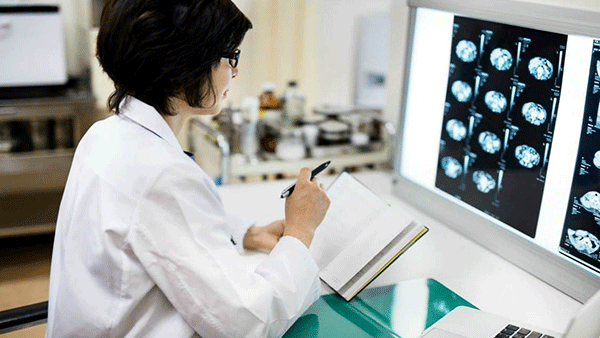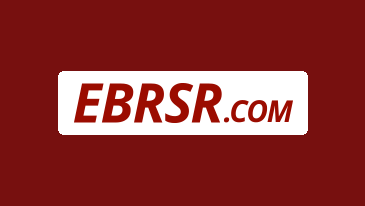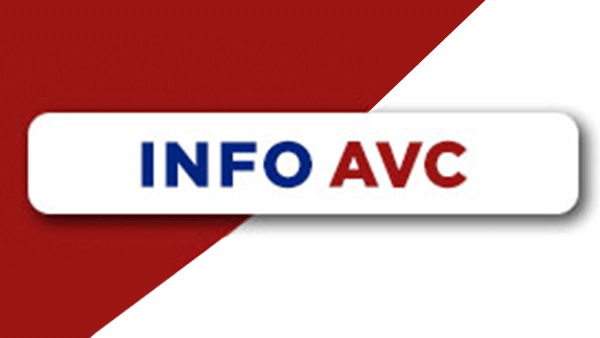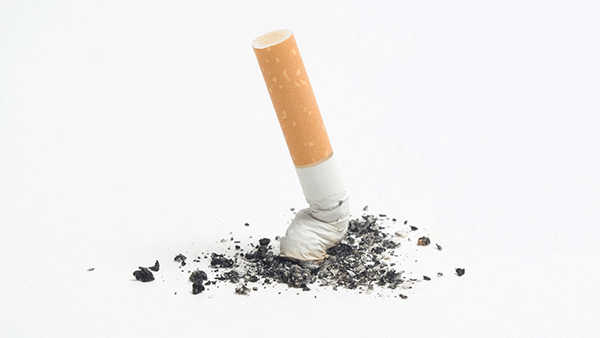- Définition et considérations
- 1. Évaluation initiale des besoins en matière de réadaptation post-AVC
- 2. Soins offerts dans les unités de réadaptation post-AVC
- 3. Prestation des soins de réadaptation post-AVC en milieu hospitalier
- 4. Réadaptation à domicile et en consultation externe post-AVC (y compris le congé précoce assisté)
- 5.1 Prise en charge des membres supérieurs après un AVC : principes généraux et traitements
- 5.2 Amplitude du mouvement et spasticité de l’épaule, du bras et de la main
- 5.3 Prise en charge de la douleur à l’épaule et du syndrome douloureux régional complexe (SDRC) après un AVC
- 6.1 Équilibre et mobilité
- 6.2 Spasticité des membres inférieurs après un AVC
- 6.3 Prévention et prise en charge des chutes
- 7. Évaluation et prise en charge de la dysphagie et de la malnutrition après un AVC
- 8. Réadaptation en cas de troubles de la perception visuelle
- 9. Prise en charge de la douleur centralisée
- 10. Réadaptation en vue d’améliorer la capacité à parler et à communiquer
- 11. Téléréadaptation après un AVC
5.1 Prise en charge des membres supérieurs après un AVC : principes généraux et traitements
6ème édition - 2019 MISE À JOUR
Recommandations
Système d’évaluation des données probantes : Aux fins de l’interprétation des présentes recommandations, « précoce » désigne le niveau de preuve pour les traitements qui s’appliquent aux patients dont l’AVC date de moins de six mois et « tardif » désigne le niveau de preuve pour les traitements qui s’appliquent aux patients dont l’AVC de référence date de plus de six mois.
A. Principes généraux
- Les patients devraient participer à un entraînement significatif, accrocheur, répétitif, progressif, axé sur les tâches et les objectifs dans une tentative d’amélioration du contrôle moteur et de rétablissement des fonctions sensorimotrices [niveau de preuve : précoce – A; tardif – A].
- Il faut inciter le patient à utiliser le membre atteint dans l’accomplissement de tâches fonctionnelles. L’entraînement devrait être conçu en vue de simuler partiellement ou entièrement les habiletés requises pour les AVQ (p. ex., se plier, boutonner sa chemise, verser et soulever des charges) [niveau de preuve : précoce – A; tardif – A].
B. Traitements particuliers
Remarque : Les traitements appropriés varient d’un patient à l’autre et dépendent de la gravité de la déficience. Il faut en prendre compte lors de l’établissement de plans de réadaptation personnels.
- Il faut offrir des exercices d’amplitude des mouvements passifs et actifs assistés, y compris les divers positionnements adéquats et sécuritaires du membre supérieur dans le champ de vision du patient [niveau de preuve C]. Voir la recommandation 5.3 pour de plus amples renseignements.
- Après une évaluation appropriée de l’admissibilité du patient, il faudrait l’encourager à se soumettre à des examens d’imagerie mentale en vue de favoriser le rétablissement des fonctions sensorimotrices du membre supérieur [niveau de preuve : précoce – A; tardif – B].
- L’utilisation de la stimulation électrique fonctionnelle (SEF) devrait être envisagée pour le poignet et les muscles de l’avant-bras afin de réduire le déficit de la fonction motrice et de favoriser son rétablissement [niveau de preuve : précoce – A; tardif – A].
- L’utilisation de la thérapie par contrainte induite du mouvement traditionnelle (TCIM) ou modifiée (TCIMm) devrait être envisagée pour certains patients dont l’amplitude d’extension du poignet est d’au moins 20 degrés et celle des doigts d’au moins 10 degrés, ainsi que des déficits sensoriels et cognitifs minimaux [niveau de preuve : précoce – A; tardif – A].
- La thérapie par le miroir doit être considérée comme traitement complémentaire de la fonction motrice chez les patients atteints d’une parésie très grave. Elle pourrait contribuer à améliorer les fonctions motrices des membres supérieurs ainsi que les AVQ [niveau de preuve : précoce – A; tardif – A].
- Malgré les données probantes mitigées, la stimulation sensorielle (p. ex. la neurostimulation électrique transcutanée, l’acupuncture et la rétroaction biologique) est envisageable comme traitement complémentaire d’amélioration de la fonction des membres supérieurs [niveau de preuve B].
- Les techniques utilisant la réalité virtuelle, tant immersives (visiocasques ou interfaces robotiques) que non immersives (dispositifs de jeu) peuvent servir d’outils auxiliaires dans le cadre d’autres thérapies de réadaptation en offrant des occasions supplémentaires de les répéter, d’augmenter leur intensité, de favoriser la participation du patient, de recueillir ses commentaires et d’axer davantage la formation sur la tâche [niveau de preuve : précoce – A; tardif – A].
- Les thérapeutes devraient envisager d’offrir des programmes d’entraînement supplémentaires visant à augmenter les mouvements actifs et l’utilisation fonctionnelle du bras atteint entre les séances de traitement (p. ex., le Graded Repetitive Arm Supplementary Program [GRASP]) qui est approprié tout autant à l’hôpital qu’à domicile [niveau de preuve : précoce – B; tardif – C].
- Les exercices de renforcement sont envisageables pour les personnes ayant une déficience légère à modérée des membres supérieurs afin d’améliorer leur force de préhension [niveau de preuve : précoce – A; tardif – A]. Les exercices de renforcement ne diminuent pas la tonicité et n’aggravent pas la douleur [niveau de preuve A].
- L’entraînement bilatéral est déconseillé par rapport à l’entraînement unilatéral pour le bras afin d’améliorer la fonction motrice des membres supérieurs [niveau de preuve A].
- La stimulation cérébrale non invasive, y compris la stimulation magnétique transcrânienne répétitive (SMTr) et la stimulation transcrânienne en courant direct (STCC) pourraient servir de traitement complémentaire en association avec la thérapie de réadaptation pour le rétablissement des fonctions motrices des membres supérieurs [niveau de preuve : SMTr – A; STCC – B].
- Il faudrait enseigner aux patients incapables de produire une activité musculaire volontaire du membre supérieur touché et à leurs aidants des techniques compensatoires et leur fournir de l’équipement adapté qui permet d’accomplir les AVQ [niveau de preuve B].
- Il est raisonnable de poursuivre l’enseignement des techniques compensatoires jusqu’à ce que le patient soit en mesure de gérer les AVQ de base de façon autonome ou jusqu’au rétablissement du mouvement actif [niveau de preuve C].
- La rééducation du contrôle du tronc devrait être associée à l’entraînement fonctionnel du membre supérieur touché [niveau de preuve C].
C. Dispositifs d’adaptation
- L’utilisation de matériel adapté pour la sécurité et l’amélioration des fonctions pourrait être envisagée si d’autres moyens d’effectuer des tâches particulières ne sont pas disponibles ou ne peuvent pas être appris [niveau de preuve C].
- Des orthèses dynamiques fonctionnelles peuvent être offertes aux patients, notamment en vue de faciliter les exercices répétitifs axés sur les tâches [niveau de preuve B].
L’AVC affecte fréquemment les fonctions du bras et de la main. Un grand nombre de survivants d’un AVC ne récupèrent pas les fonctions normales qui leur permettent d’accomplir les activités de la vie quotidienne. Le fonctionnement des deux bras est nécessaire à la quasi-totalité des activités quotidiennes. Un grand nombre de techniques ont été développées pour ceux qui ont conservé des mouvements minimaux du bras.
La rétroaction des personnes ayant subi un AVC mettait l’accent sur l’importance de l’instruction relative aux appareils et accessoires adaptés ainsi que la participation des membres de la famille et des aidants à cette formation. Les frais potentiels des dispositifs devraient aussi être abordés.
L’évaluation et la prise en charge appropriées et en temps opportun des fonctions des membres supérieurs exigent les éléments suivants:
- Une évaluation initiale uniformisée de ces fonctions par des cliniciens expérimentés dans le domaine de l’AVC.
- L’accès en temps opportun aux services de réadaptation post-AVC spécialisés et interdisciplinaires qui offrent des traitements dont le type et l’intensité sont appropriés.
- L’accès au matériel approprié (comme la stimulation électrique fonctionnelle).
- La disponibilité à grande échelle de soins de réadaptation de longue durée dans les centres de soins infirmiers, les établissements de soins de longue durée et les programmes ambulatoires et communautaires.
- L’utilisation de la robotique est en plein essor. Par conséquent, les programmes de réadaptation post-AVC devraient, dans la mesure du possible, se doter de la capacité requise pour intégrer ces technologies que les données issues de la recherche dans le domaine considèrent comme étant adaptées à certains patients et, à l’avenir, les intégrer en tant que composante à part entière de leur programme.
- Ampleur des changements (amélioration) de l’état fonctionnel selon une échelle d’évaluation uniformisée à partir de l’admission dans un programme de réadaptation pour patients hospitalisés jusqu’à la sortie.
- Ampleur des changements de l’état fonctionnel du bras et de la main selon une échelle d’évaluation uniformisée à partir de l’admission dans un programme de réadaptation en milieu hospitalier ou communautaire jusqu’à la sortie.
- Délai médian entre l’admission aux soins de courte durée d’un hôpital en raison d’un AVC et l’évaluation du potentiel de réadaptation effectuée par un spécialiste des soins de réadaptation.
- Durée médiane du séjour dans une unité de prise en charge de l’AVC pendant la réadaptation en milieu hospitalier.
- Nombre moyen d’heures par jour de thérapie axée sur les tâches offerte par l’équipe interdisciplinaire de soins de l’AVC.
- Nombre moyen de jours par semaine de thérapie directe axée sur les tâches offerte par l’équipe interprofessionnelle de soins de l’AVC (cible : minimum de cinq jours).
Notes relatives à la mesure des indicateurs
- Un processus de saisie des données devra être établi afin de regrouper les résultats de santé obtenus par des outils, tels que l’échelle Chedoke-McMaster (p. ex., ARAT ou WMFT).
- Les données de l’instrument MIF se trouvent dans la banque de données du SNIR de l’ICIS pour ce qui est des organismes qui y contribuent.
- Indicateur de rendement 5 : par thérapie directe, il faut entendre le temps que le thérapeute et le patient passent face à face, et non les séances de groupe ni le temps consacré à la documentation.
Renseignements destinés aux fournisseurs de soins de santé
- Tableau 1 : Outils de dépistage et d’évaluation pour la réadaptation post-AVC (en anglais)
- MIF
- Logiciel AlphaFIM® (en anglais seulement)
- L’échelle d’évaluation d’AVC Chedoke-McMaster
- L’inventaire de Chedoke des activités de la main et du bras (CAHAI)
- L’échelle d’Ashworth modifiée
- Box and Block Test (Test des boîtes et des blocs)
- Test des neuf chevilles
- Fugl-Myer Assessment of Sensory-Motor Recovery (Évaluation du rétablissement sensorimoteur de Fugl-Myer; en anglais seulement)
- L’inventaire de Chedoke des activités de la main et du bras (CAHAI)
- Action Research Arm Test (Test de recherche d’activité du bras)
- Wolf Motor Function Test (test du fonctionnement moteur de Wolf)
- Info AVC
Informations destinées aux personnes ayant subi un AVC, à leur famille et à leurs aidants
- Prendre en main son rétablissement : fiche d’information sur la réadaptation et le rétablissement
- Prendre en main son rétablissement : fiche d’information sur les transitions et la participation communautaire
- Aphasia Institute (en anglais seulement)
- Liste de contrôle post-AVC
- Le répertoire des services et ressources de Cœur + AVC
- Votre cheminement après un accident vasculaire cérébral : un guide à l’intention des survivants de l’AVC
- Info AVC
- Partenariat canadien pour le rétablissement de l’AVC de la fondation
Lien vers les tableaux de données probantes et la liste des références (en Anglais)
Task-Specific Training
Task-specific training involves the repeated practice of functional tasks, which combines the elements of intensity of practice and functional relevance. The tasks should be challenging and progressively adapted and should involve active participation. French et al. (2016) included the results from 11 randomized controlled trials (RCTs) that included an upper limb rehabilitation component. Repetitive task-specific training was associated with a small treatment effect on arm and hand function, assessed post intervention. (SMD=0.25, 95% CI 0.01 to 0.49, p=0.045 and SMD=0.25, 95% CI 0.00 to 0.51, p=0.05, respectively). The benefits appeared to persist up to 6 months follow-up. Patients treated from 16 days to 6 months post stroke derived the greatest value. In contrast to these findings, in an earlier systematic review of motor recovery following stroke, Langhorne et al. (2009) identified 8 RCTs of repetitive task training, specific to the upper-limb. In these trials, treatment duration varied widely from a total of 20 to 63 hours provided over a 2 week to 11-week period. Therapy was not associated with significant improvements in arm function (SMD=0.19, 95% CI -0.01 to 0.38) or hand function (SMD= 0.05, 95% CI -0.18 to 0.29). Perhaps the inclusion of trials that evaluated repetitive task training in addition to task-oriented training was, in part, responsible for the null result. In a crossover RCT, Shimodozone et al. (2013) randomized 49 participants in the sub-acute phase of stroke to one of two groups: 1) repetitive facilitative exercise (RFE), or 2) control-conventional rehabilitation program. Both groups received 40 min sessions 5x/wk. for 4 weeks of their allocated treatment. Both groups performed 30 min/day of dexterity-related training immediately after each treatment session and continued their participation in a standard inpatient rehabilitation program. Action Research Arm Test (ARAT) and the Fugl-Meyer Assessment (FMA) were assessed at baseline, and at week 2 and 4. After 4 weeks of treatment, significantly greater improvements on the ARAT (p=0.009) and FMA (p=0.019) were demonstrated by the RFE group compared to the control group.
Mental Practice
Mental practice is the process whereby an individual repeatedly rehearses tasks mentally without physically performing them, with the goal of improving actual performance. When used in addition to structured therapy, mental practice can improve measures of upper-limb impairment and disability. A large treatment effect (upper-extremity function: SMD=1.37, 95% CI 0.60 to 2.15, p<0.0001) was reported by Barclay-Goddard et al. (2011) in a Cochrane review, which included the results from 6 RCTs. The length of treatment ranged from 3 to 10 weeks.
Constraint Induced Movement Therapy
Traditional constraint-induced movement therapy (CIMT) involves restraint of the unaffected arm for at least 90 percent of waking hours, in addition to a minimum of six hours a day of intense upper-extremity (UE) training of the affected arm every day for two weeks. This form of therapy may be effective for a select group of patients who demonstrate some degree of active wrist and arm movement and have minimal sensory or cognitive deficits. Evidence from the VECTORS trial (Dromerick et al. 2009) suggests that traditional (intensive) CIMT should not be used for individuals in the first month post stroke, and in fact may be associated with worse outcomes. Patients who were randomized to receive 3 hours of intensive therapy in addition to wearing a constraint for 6 hours/day had lower ARAT scores at 3 months compared with patients who had received conventional occupational therapy or standard CIMT for 2 hours each day. In the largest RCT of conventional CIMT (Wolf et al. 2006), which included 222 patients, recruited 3-9 months post stroke, patients in the CIMT group had significantly greater improvement in Wolf Motor Function Tests (WMFT) scores and Motor Activity Log (MAL) (Amount of Use and Quality of Movement sub scores) at 12 months, compared with patients in the control group who received usual care, which could range from no therapy to a formal structured therapy program.
Modified constraint-induced movement therapy (m-CIMT) is a more feasible therapy option when resources are limited. In the most common variation of traditional CIMT, the unaffected arm is restrained with a padded mitt or arm sling for five hours a day, and with half-hour blocks of 1:1 therapy provided for up to 10 weeks (Page et al. 2013). The results from several good-quality RCTs suggest that patients who received mCIMT in the subacute or chronic phase of stroke experienced greater functional recovery compared with patients who received traditional occupational therapy. In the EXPLICIT trial (Kwakkel et al. 2016) 58 participants in the acute phase of stroke were randomized to a usual care group of a modified CIMT (mCIMT), which involved restraint for 3 hours, 5 days a week for 3 weeks in addition to 60 minutes of supervised intensive graded practice focused on improving task-specific use of the paretic arm and hand. There was significantly greater improvement in the mCIMT group on ARAT scores, the primary outcome, from baseline to 5, 8- and 12-weeks following treatment, but not at 26 weeks. There were no significant differences between groups on impairment measures, such as the FMA of the arm, or Motricity Index scores.
Liu et al. (2017) included the results of 16 RCTs examining m-CIMT or CIMT in the acute or subacute stage of stroke and reported significantly greater gains in Action Research Arm Test, Barthel Index, Fugl-Meyer Assessment, and Motor Activity Log scores (amount of use and quality of use) compared with the control condition. A Cochrane review (Corbetta et al. 2015) included the results from 42 RCTs examining both CIMT and m-CIMT, across the spectrum of the stroke recovery continuum. Overall, neither form of CIMT (traditional or modified) was associated with a significant improvement in standardized measures of disability (SMD=0.24, 95% CI -0.05 to 0.52) at the end of treatment, or at 6 to 12 months follow-up (SMD=-0.21, 95% CI -0.57 to 0.16), compared with usual care. CIMT was associated with significant improvements in arm motor function, dexterity and measures of arm motor impairment. The results from this review are difficult to interpret since trials of all forms of CIMT were included as were patients in all stages of stroke recovery.
GRASP
Evidence from a single trial evaluating the Graded Repetitive Arm Supplementary Program (GRASP) program suggests that additional therapy, performed outside of regular therapy can improve upper-limb function (Harris et al. 2009). In this multi-site RCT, 103 patients recruited an average of 21 days following stroke with upper-extremity Fugl Meyer scores between 10 and 57, were randomized to participate in a 4 week (one hour/day x 6 days/week) homework-based, self-administered program designed to improve ADL skills through strengthening, ROM and gross and fine motor exercises or to a non-therapeutic education control group At the end of the treatment period, participants in the GRASP group had significantly higher mean Chedoke Arm & Hand Activity Inventory, ARAT and MAL scores compared with the control group. The improvement was maintained at 3 months follow-up.
Virtual Reality
Laver et al. (2017) included the results of 22 RCTs in a Cochrane review examining the effectiveness of virtual reality, mainly using commercially available gaming consoles. Compared with conventional treatment, virtual reality interventions were not associated with significant improvements in measures of upper-limb function, at either the end of treatment, or at 3 months, (SMD=0.07, 95% CI -0.05 to 0.20 and SMD=0.11, 95% CI -0.10 to 0.32, respectively). However, when virtual reality was used in addition to usual care (providing a higher dose of therapy for those in the intervention group) there was a statistically significant difference between groups (SMD= 0.49, 0.21 to 0.77, 10 studies). When assessments were conducted using the FMA (upper-extremity) at the end of treatment, there was a significant treatment effect of virtual reality. The results from several recent RCTs (Aide et al., 2017, Brunner et al. 2017, Kong et al., 2016, Saposnik et al. 2016) indicated that virtual reality was not associated with significant improvements in Action Research Arm Test scores, or a variety of other outcomes, including Canadian Occupational Performance Measure, Stroke Impact Scale, Functional Independence Measure, or FMA.
Mirror Therapy
Mirror therapy is a technique that uses visual feedback about motor performance to enhance upper-limb function following stroke and reduce pain. Zeng et al. (2017) included the results from 11 RCTs and reported that mirror therapy was associated with significantly increased motor impairment compared with the control condition (SMD=0.51, 95%CI 0.29-0.73). Evidence from a Cochrane review (Thieme et al. 2012), which included the results from 14 RCTs, indicated a modest treatment effect associated with mirror therapy. There were significant improvements in motor function, the primary outcome, both immediately following treatment (SMD=0.61; 95% CI 0.22 to 1.0, p= 0.002) and at 6 months (SMD=1.09; 95% CI 1.09 to 1.87, p= 0.0068). There were also improvements in performance of ADLs (SMD=0.33, 95% CI 0.05 to 0.60, p=0.02) and pain (SMD= -1.1, 95% CI -2.10 to -0.09, p=0.03). Radajewska et al. (2013) randomized 60 participants 1:1 (mean 9.25 wk post stroke) to a mirror therapy (MT) or a control group, in addition to standard rehabilitation. Within each group, participants were divided into left- versus right-arm paresis subgroups. The treatment group received 15-minute sessions of mirror therapy 2x/day, 5d/wk for 3 wk. In the left-hand subgroups, those in the MT group showed a significantly greater improvement in Frenchay Arm Test scores compared with controls (p=0.035), but there were no significant between-group differences on Motor Status Scale scores or Functional Index ‘Repty’. In the right-hand subgroups, there were no significant between-group differences over time for any of the outcomes.
Functional Electrical Stimulation
While functional electrical stimulation (FES) has been investigated extensively in the rehabilitation of the lower extremity and for preventing/treating shoulder subluxation, there is a smaller literature base for its use as a modality to improve upper-extremity function. Eraifej et al. (2017) included the results of 20 RCTs in a systematic review that evaluated the ability of FES to improve activities of daily living and motor function. Pooling data from 8 trials, there was no significant difference between groups in ADL performance (SMD=0.64, 95% CI -0.02 to 1.30, p=0.06);however, in sub group analysis including 5 trials, persons who received FES during the acute phase of stroke (within 2 months) did improve their ADL performance with FES (SMD=1.24, 95% CI 0.46 to 2.03, p=0.002). FES was associated with significant improvement in Fugl-Meyer Assessment scores (MD=6.72, 95% CI 1.76, 11.68, p=0.008). In the EXPLICIT trial, Kwakkel et al. (2016) reported the group that received EMG-triggered neuromuscular electrical stimulation on finger extensors for 60 minutes a day for 3 weeks did not have significantly better outcomes on a wide variety of outcome measures compared with the group that received conventional rehabilitation only. Vafadar et al. (2015) pooled the results from 10 trials evaluating the use of FES for the rehabilitation of shoulder subluxation, pain, and upper arm motor function. Pooling the results from 5 trials, FES was not associated with significant improvements in arm motor function when initiated early post stroke, compared with conventional therapy (SMD=0.36, 95% CI -0.27 to 0.99, p=0.26). Pooling of results was not possible for an evaluation of FES in the chronic stage of stroke.
Bilateral/Unilateral Arm Training
The evidence that bilateral arm training is superior to conventional rehabilitation, is conflicting, and very much dependent on the outcome used for assessment. A Cochrane review (Coupar et al. 2010), which included the results from 18 RCTs, indicated that, compared with conventional care, bilateral training was not associated with significantly better scores on measures of arm function, ADL performance or extended ADL, but did improve motor impairment. In another systematic review, Van Delden et al. (2012) reported significantly greater improvements in measures of function (SMD=0.20, 95% CI 0.0–0.4; p=0.05), but not impairment or performance.
Strength Training
In a systematic review, including 13 RCTs, (Harris & Eng (2010) reported that therapy programs including a strength training or resistance training component were associated with significant improvements in motor function (SMD=0.21, 95%CI 0.03–0.39, p=0.03), grip strength (SMD=0.95, 95% CI 0.05 to 1.85, p=0.04), but not performance of ADLs (SMD=0.26, 95% CI -0.10 to 0.63, p=0.16). Improvements were noted in both the acute and chronic stages of stroke.
Non-invasive brain stimulation
Non-invasive brain stimulation using either transcranial direct-current stimulation (tDCS) or repetitive transcranial magnetic stimulation (rTMS) have been shown to be potential useful forms of treatment for upper-extremity rehabilitation. Chhatbar et al. (2016) included the results from 8 RCTs (213 subjects) investigating the role of tDCS (≥5 sessions) in post stroke recovery of upper limb, compared with a sham condition. tDCS was associated with significantly greater improvements in FMA (upper extremity scores) compared with sham treatment (SMD=0.61, 95% CI 0.08 to 1.13, p=0.02). Treatment effects were more pronounced in the chronic vs. acute stage of stroke (SMD=1.23 vs. SMD=0.18). However, the results from another systematic review (Triccas et al. 2016) using many of the same trials and which also used FMA as an outcome, did not find that tDCS improved upper-extremity Fugl-Meyer Assessment scores, immediately following intervention (SMD=0.11, 95% CI -0.17 to 0.38, p=0.44), or after short- or long-term follow-up (n=2: SMD=0.27, 95% CI -0.40 to 0.95, p=0.43 and SMD=0.23, 95% CI-0.17 to 0.62, p=0.26, respectively).
In the Navigated Inhibitory rTMS to Contralesional Hemisphere Trial (NICHE), Harvey et al. (2018) randomized 199 patients with a unilateral ischemic or hemorrhagic stroke occurring within 3 to 12 months of enrollment, with a Chedoke assessment stage of 3-6 for both arm and hand, to receive low-frequency (1 Hz) active or sham rTMS to the noninjured motor cortex before each 60-minute therapy sessions, delivered over 6-weeks. At the end of 6 months, 67% of the experimental group and 65% of sham group improved ≥5 points on 6-month upper extremity FMA (p=0.76). There was also no difference between experimental and sham groups in the ARAT (p=0.80) or WMFT (p=0.55) scores. Li et al. (2016) reported no differences between high and low frequency rTMS (10 and 1 Hz), provided for 20 minutes for 2 weeks. Compared with sham stimulation, patients in both active rTMS groups experienced significantly greater improvement in mean FMA (upper extremity) scores at the end of the treatment period, with no significant differences between groups in mean Wolf Motor Function Test scores. Graef et al. (2016) included the results of 11 RCTs evaluating the effect of rTMS on upper limb motor function. Active rTMS was not associated with significantly greater improvement in FMA (upper extremity) scores compared with sham treatment (MD=0.5, 95% CI -0.2 to 3.20, p=0.72), ARAT, WMFT or Box & Block Test scores.

